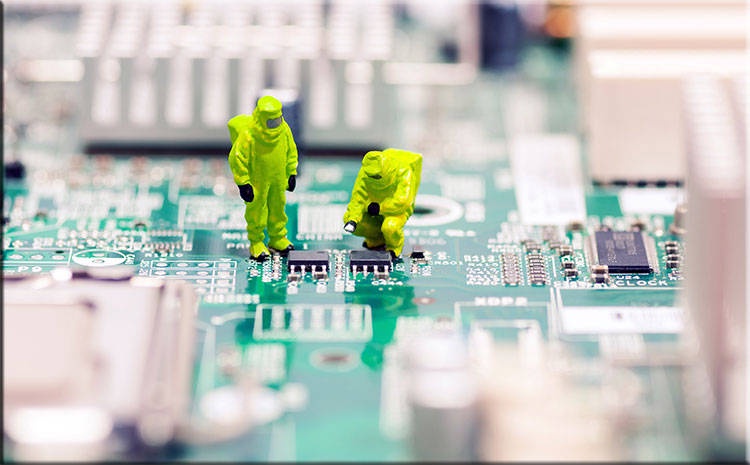Introduction
In the world of electronics, capacitors play a vital role in storing and releasing electrical energy. They are an essential component of almost every electronic circuit, ensuring smooth functionality and reliable performance. Two commonly used types of capacitors are silicon capacitors and ceramic capacitors. While both serve the same basic purpose, they exhibit distinct characteristics that make them suitable for different applications. In this article, we will explore the differences between silicon capacitors and ceramic capacitors, shedding light on their unique features and applications.
What are Capacitors?
Before we delve into the specifics of silicon and ceramic capacitors, let's briefly understand what capacitors are. A capacitor is a passive electronic component with the ability to store an electrical charge. It consists of two conductive plates separated by an insulating material known as the dielectric. When a voltage is applied across the capacitor, it stores energy in its electric field, and when the voltage is removed, it releases that stored energy.
Silicon Capacitors: An Overview
Silicon capacitors, also known as semiconductor capacitors, are a type of capacitor that uses silicon as the dielectric material. These capacitors are widely used in various applications, including high-frequency circuits, voltage regulators, and signal conditioning.
Silicon Capacitor Construction
Silicon capacitors are constructed using a silicon wafer as the dielectric material. The silicon wafer is sandwiched between two metal plates, typically made of aluminum or other conductive materials. The metal plates act as electrodes, allowing the capacitor to charge and discharge effectively.
Advantages of Silicon Capacitors
High Frequency: Silicon capacitors are well-suited for high-frequency applications due to their low parasitic effects and minimal losses.
Voltage Stability: These capacitors offer excellent voltage stability, making them reliable in voltage regulation circuits.
Temperature Performance: Silicon capacitors exhibit stable performance across a wide temperature range.
Disadvantages of Silicon Capacitors
Lower Capacitance: Compared to ceramic capacitors, silicon capacitors typically have lower capacitance values.
Limited Range of Capacitance: Silicon capacitors are not suitable for applications requiring extremely high capacitance.
Ceramic Capacitors: An Overview
Ceramic capacitors are among the most commonly used capacitors in the electronics industry. They utilize ceramic as the dielectric material and are widely employed in decoupling, filtering, and coupling applications.
Ceramic Capacitor Construction
Ceramic capacitors consist of a ceramic disc or a multilayer ceramic structure as the dielectric material. The ceramic material is coated with metal on both sides, acting as the capacitor's electrodes.
Advantages of Ceramic Capacitors
High Capacitance Range: Ceramic capacitors offer a wide range of capacitance values, from picofarads to microfarads, catering to various application needs.
Compact Size: They are available in small and compact sizes, making them ideal for space-constrained electronic circuits.
Cost-Effective: eramic capacitors are cost-effective and readily available, making them a popular choice in the electronics industry.
Disadvantages of Ceramic Capacitors
Piezoelectric Effect: Ceramic capacitors can exhibit the piezoelectric effect, which may cause unwanted noise or interference in certain applications.
Voltage Dependency: The capacitance of ceramic capacitors can be voltage-dependent, leading to changes in their performance at different voltage levels.
Comparison Between Silicon and Ceramic Capacitors
Now that we understand the basic features of both silicon and ceramic capacitors, let's compare them based on various factors:
Electrical Properties
Silicon capacitors offer lower capacitance compared to ceramic capacitors. However, they excel in high-frequency applications due to their low parasitic effects. On the other hand, ceramic capacitors provide a broader range of capacitance options, suitable for diverse electronic circuits.
Frequency Response
Silicon capacitors exhibit superior frequency response, making them ideal for high-frequency applications such as radio-frequency circuits. Ceramic capacitors, while not as efficient at high frequencies, perform admirably in lower frequency applications.
Temperature Stability
Silicon capacitors maintain their performance consistently across a wide temperature range, making them suitable for applications operating in extreme conditions. Ceramic capacitors are also temperature stable but may not be as reliable as silicon capacitors in extremely high-temperature environments.
Size and Packaging
Ceramic capacitors have the upper hand when it comes to size and packaging. Their compact size makes them perfect for miniaturized electronic devices, while silicon capacitors might occupy more space.
Applications
Silicon capacitors find extensive use in high-frequency circuits, voltage regulators, and signal conditioning due to their high-frequency capabilities. Ceramic capacitors are commonly found in decoupling, filtering, coupling, and general electronic applications.
Conclusion
In conclusion, both silicon capacitors and ceramic capacitors are essential components in the electronics industry. While silicon capacitors excel in high-frequency applications with their voltage stability, ceramic capacitors offer a broad range of capacitance values and compact sizes, making them suitable for various circuit designs. The choice between these two types of capacitors depends on the specific requirements of the application.
FAQs
- Are silicon capacitors more expensive than ceramic capacitors?
Silicon capacitors tend to be more expensive than ceramic capacitors due to the complexity of their manufacturing process and specialized applications.
- Can I replace a silicon capacitor with a ceramic capacitor in my circuit?
It depends on the specific circuit requirements. While both capacitors have distinct properties, some applications may allow for interchangeability.
- Do ceramic capacitors generate noise in circuits?
In certain situations, ceramic capacitors may exhibit the piezoelectric effect, causing them to generate noise or interference in the circuit.
- Which capacitor is better for high-frequency circuits?
Silicon capacitors are better suited for high-frequency circuits due to their low parasitic effects and excellent frequency response.
- Can I use silicon or ceramic capacitors in power supply applications?
Both silicon and ceramic capacitors are suitable for power supply applications, but the choice depends on factors such as frequency, voltage requirements, and board space constraints.


No comments yet